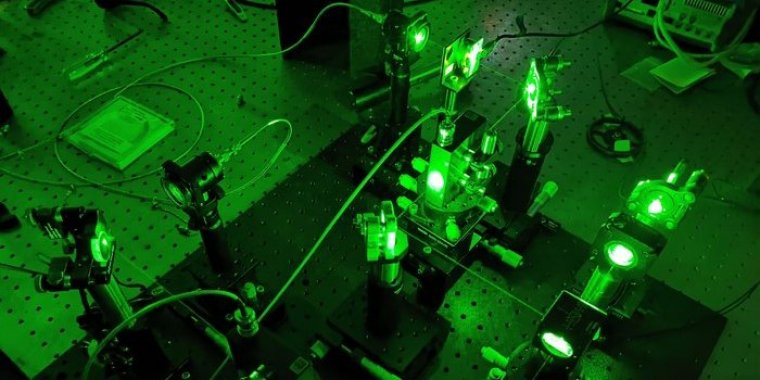| News / Tech News |
New holographic camera sees the unseen with high precision
Researchers at Northwestern University have invented a new high-resolution camera that can see the unseen -- including around corners and through scattering media, such as skin, fog or potentially even the human skull.

A setup of one of the holographic camera prototypes in the laboratory. Photo: Florian Willomitzer/Northwestern University
Called synthetic wavelength holography, the new method works by indirectly scattering coherent light onto hidden objects, which then scatters again and travels back to a camera. From there, an algorithm reconstructs the scattered light signal to reveal the hidden objects.
Due to its high temporal resolution, the method also has potential to image fast-moving objects, such as a beating heart through a chest or speeding cars around a street corner.
“Computational photography is an exciting research area that can enhance the capabilities of computer vision,” said Jie Yang, a program director in NSF’s Division of Information and Intelligent Systems.
“This camera enables new capabilities for many applications in, for example, autonomous driving, environmental monitoring and smart health.”
The relatively new research field of imaging objects behind occlusions or scattering media is called non-line-of-sight, or NLoS, imaging. Compared to related NLoS imaging technologies, the new method can rapidly capture full-field images of large areas with submillimeter precision.
With this level of resolution, the computational camera could potentially image through the skin to see even the tiniest capillaries at work.
While the method has obvious potential for noninvasive medical imaging, early-warning navigation systems for automobiles and industrial inspection in tightly confined spaces, the researchers believe the potential applications are endless.
“Our technology will usher in a new wave of imaging capabilities,” said Northwestern’s Florian Willomitzer, first author of the study.
“Our current sensor prototypes use visible or infrared light, but the principle is universal and could be extended to other wavelengths. For example, the same method could be applied to radio waves for space exploration or underwater acoustic imaging. We have only scratched the surface.” (National Science Foundation)





